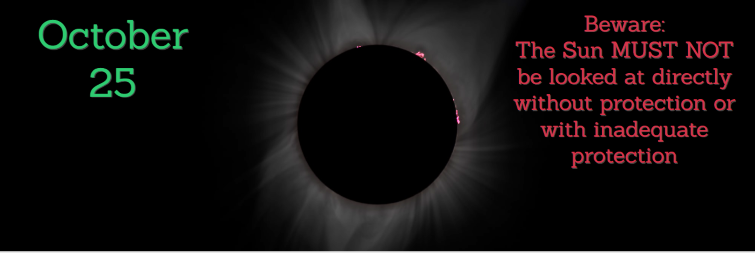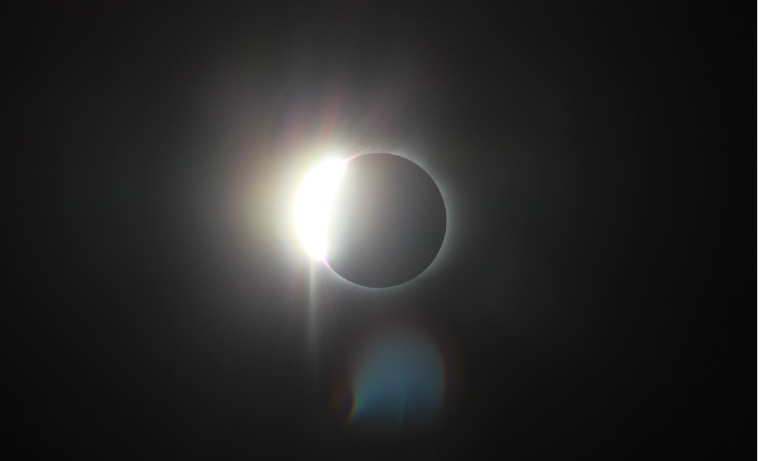Catch the last eclipse of 2022

The last solar eclipse for this year is supposed to happen on October 25. It will be visible from almost all of Europe, most of Asia and from northeastern Africa and southeastern Greenland.
A total eclipse of the Sun will not happen this time, which means that nowhere on Earth will the Moon completely cover the Sun’s disc.
A partial solar eclipse occurs when the center of the Moon’s shadow misses the Earth
This eclipse cycle is called Solar Saros 124 and repeats every 18 years and 11 days.
For some, saros may be a new term. It is a period of 223 synodic months or approximately 6585.3211 days.
If we were to translate it into years, it is 18 years and 11⅓ days. The term is used to predict a solar eclipse.
One saros time (18 years and 11⅓ days) after the eclipse, the Sun, Earth, and Moon will be in approximately the same relative position (almost in a straight line), and an almost identical eclipse will occur.
So, what exactly is a partial eclipse?
Eclipses are astronomical phenomena in which one celestial body enters the shadow of another celestial body.
Truth be told, the phenomenon when the Earth enters the Moon’s shadow should have been called an eclipse of the Earth, not a solar eclipse. Plastically speaking, the Earth enters the eclipse zone, not the Sun.
Eclipses can be total or partial. Total eclipses occur when one celestial body is completely obscured by another celestial body, and partial when one celestial body is partially obscured by another celestial body.
From a geometrical point of view, it is clear that the three bodies must be in the same line and in the same plane in order for an eclipse to occur, and the term syzygy is used for this.

An eclipse of the Sun or the Moon occurs when the three bodies align, so that they are in the same plane, because the Moon’s path around the Earth is inclined a little over 5° in relation to the plane of the Earth’s ecliptic.
When we have a case of a total eclipse, it is clear that the “eclipsing” body is at the appropriate distance from the eclipsed body to cover the light source, i.e. the Sun, with its entire surface and thereby create a shadow zone.
Partial eclipses are when the eclipsing body either does not cross the entire Sun’s disk or does not cover the entire Sun with its apparent diameter.
The Law of conservation of angular momentum
The moon is slowly but surely moving away from the Earth and at some point, there will no longer exist the phenomenon of a total eclipse of the Sun.
At the time of the creation of the Moon (about 4 billion years ago), the speed of rotation of the Earth around its axis was then four times faster than today. With its gravitational action, the Moon affects the formation of tides on Earth.
As the Earth rotates faster around its axis than the Moon around it, it happens that the Moon slows down the rotation of the Earth around its axis.
Try to find out how ballerinas make use of the law of conservation of angular momentum.
And knowing this, why not catch the last eclipse for this year?
Important
A telescope and all optical devices generally collect the light of the Sun in an eyepiece.
The energy of a photon, a particle of light, is concentrated in a small space, where the temperature suddenly increases. This puts the optical lenses of the eyepieces and the observer’s eye at risk.
The Sun MUST NOT be looked at directly without protection or with inadequate protection!
If shooting stars are more your thing, check out this cool guide.
Don’t have a telescope yet? Or perhaps, you need a star gazing buddy to join you? We have the perfect solution.

